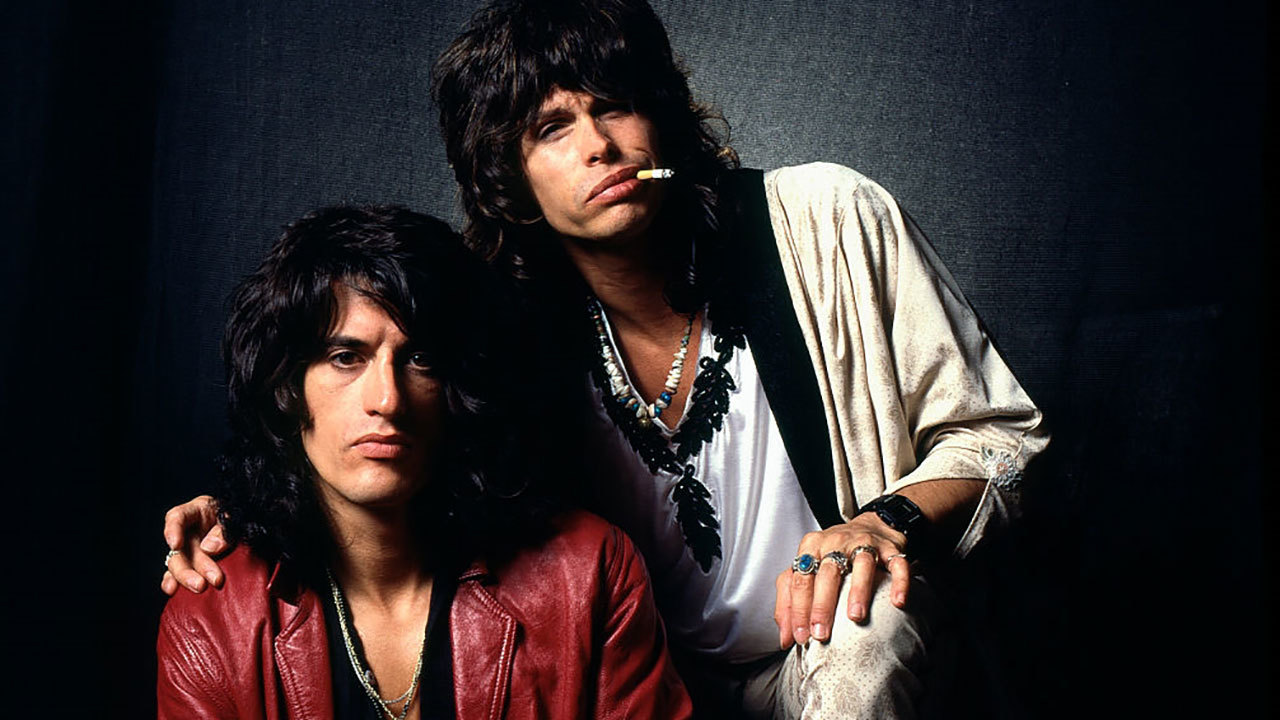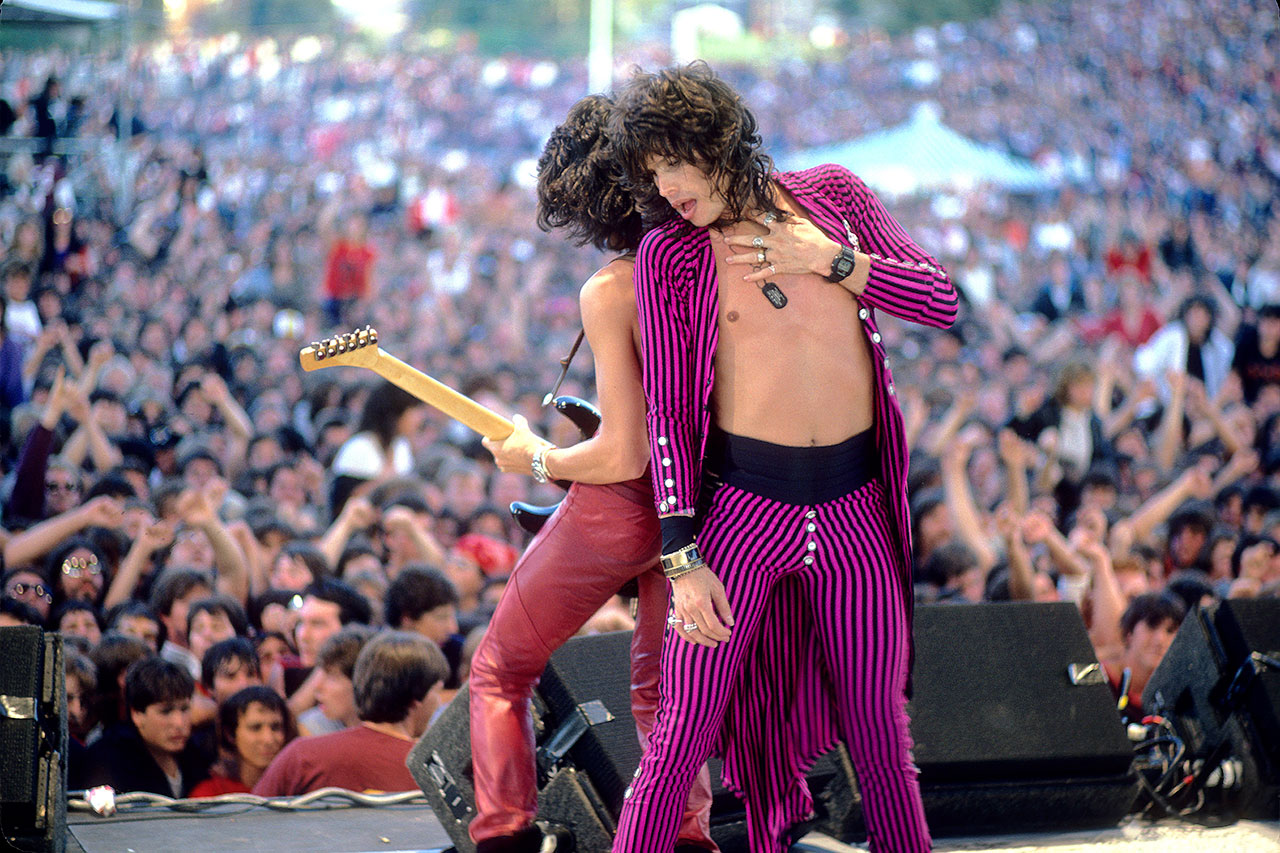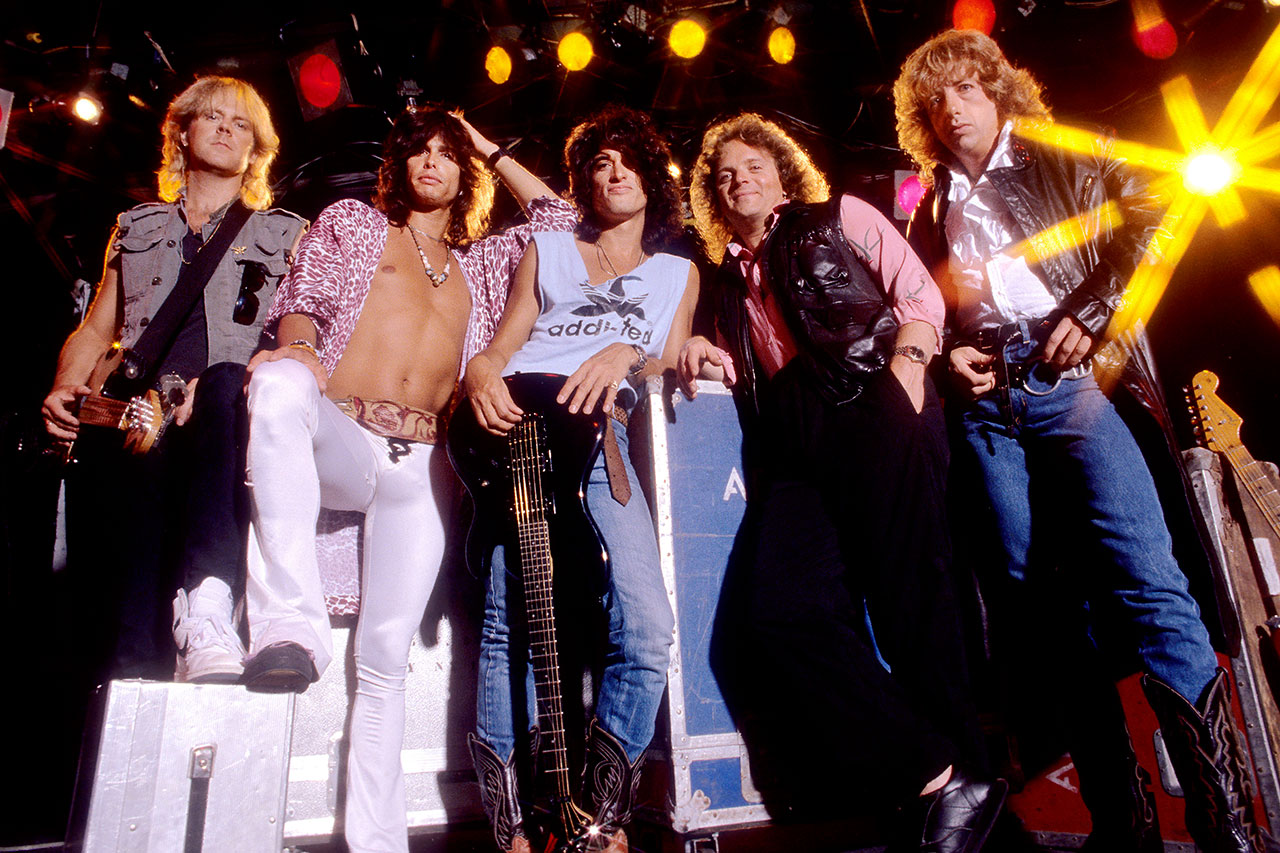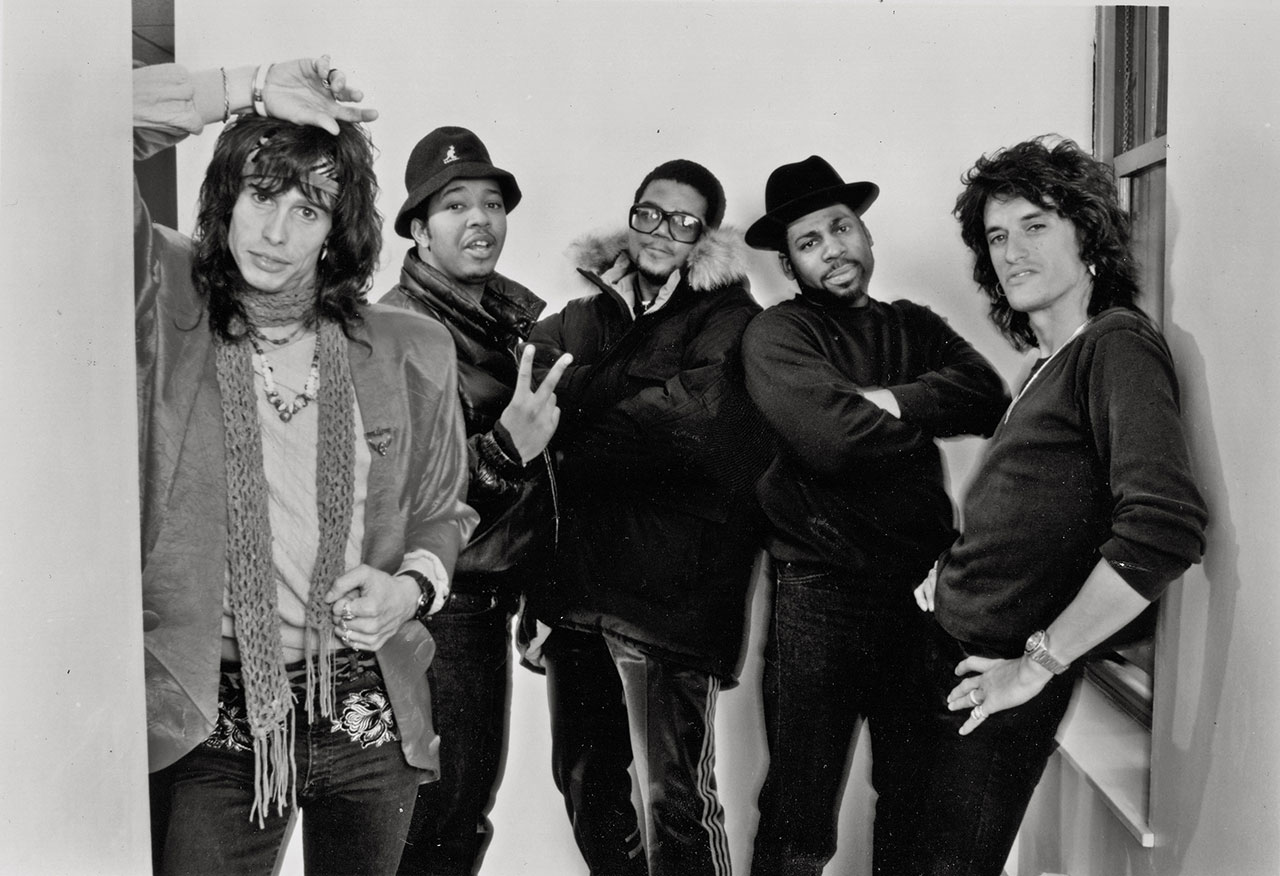Aerosmith: How Done With Mirrors took them back to the big time
Aerosmith's 1985 comeback Done With Mirrors served as a crucial bridge between the wild 70s Aerosmith and the smooth-rock behemoth of the 80s and 90s

Aerosmith’s Done With Mirrors has been voted in at number five in our countdown of the 100 Greatest Albums Of The 1980s. See the full list here.
Upon hearing that Done With Mirrors is being reclaimed as one of the great lost albums of the 1980s, Joe Perry’s reaction is one of surprise. Or perhaps outright disbelief would be a more accurate description. From when he first begins speaking today at his home in Florida, the now 66-year-old guitarist can barely form a coherent sentence to encapsulate his thoughts on Aerosmith’s eighth studio album. At the time it was also a contender for their least well-regarded, an ignominy it then shared with its immediate predecessor, Rock In A Hard Place, made without Perry and when the great Boston band were at their lowest ebb. After wandering up several grammatical blind alleys, with much huffing, puffing and sighing, Perry eventually settles upon a question: “Um, whatever possessed you guys to pick that one?”
More than once, Perry himself has listed Done With Mirrors as his least favourite Aerosmith album – which, considering the dubious merits of, say, 2001’s Just Push Play, is going some. And yes, when it was released back in 1985, critics set upon it like a pack of wild dogs. The Rolling Stone writer’s judgement, for example, amounted to this withering sentence: “The work of burnt-out lug-heads whose lack of musical imagination rivals their repugnant lyrics.” Nor could it be said to have won favour with the greater body of Aerosmith’s fans. Done With Mirrors arrived on the Billboard chart at a lowly 36 with an anchor attached to it and sank fast.
It was a short, slight-seeming work, a mere eight tracks in its original form (a ninth, Darkness, was added as a ‘bonus’ on the CD version), and it ran to less than 36 minutes. As soon as 1987’s Permanent Vacation followed it, and then Pump two years later – both of them slick, polished and commercial smashes in all the ways Done With Mirrors wasn’t – it was forgotten, brushed under the carpet like an embarrassing mess.
Distance, though, has been good to Aerosmith’s bastard child, allowing it to grow and assume substance and weight. Three decades having passed, it can now be seen for what it is: arguably the band’s most pivotal album, a staging post between their 70s glory days and the cleaned-up incarnation that was song-doctored to multi-platinum success from the late 80s and through the 90s.
On Mirrors, Aerosmith, backed against the wall by their own dalliances and demons, came out spitting and fighting, wild-eyed and desperate. This was the same raw, unrefined version of the band that had made the seminal Rocks album in 1976, and also 1979’s volatile, unhinged Night In The Ruts. That latter record was a close cousin to Mirrors – on each there’s the tangible sense that the band are walking a tightrope, grasping for a euphoric release, and at the same time just one misstep from plunging into an unfathomable abyss. Done With Mirrors is the album that found Aerosmith down in the gutter, muddied, bloodied, with dirt under their fingernails but looking up at the stars.
1975’s Toys In the Attic, home to Walk This Way and Sweet Emotion, and after it Rocks, had seen Aerosmith assume the mantle of America’s greatest living rock band. Undisputed classics, these were albums with a knowing, cocksure swagger. Wellsprings of inspiration for everyone from Axl Rose and Slash to Kurt Cobain, on the back of them Aerosmith sashayed into being a stadium-filling act in their homeland. Yet they were soon to be brought crashing back down to earth. It was a combination of hubris and their own prodigious drug intake that did for them, and most especially for Tyler and Perry, who with good reason were by then christened the Toxic Twins.
Sign up below to get the latest from Classic Rock, plus exclusive special offers, direct to your inbox!
Their next record, 1977’s Draw The Line, was a mostly ragged mess. Recording it at a disused convent in upstate New York, Tyler got so discombobulated from epic substance abuse that he later reported seeing in triplicate. Taking a break from making Night In The Ruts to headline a stadium gig in Cleveland on July 28, 1979, Aerosmith came apart. Backstage during a heated argument, Perry’s then-wife Elyssa threw a glass of milk over bassist Tom Hamilton’s wife, Terry. Afterwards, Tyler confronted Perry about his wife’s behaviour. The upshot was that Perry walked out of the band (his version) or he was sacked (Tyler’s). Either way, and as Tyler later remarked dryly, Aerosmith had actually split over spilt milk.
The years that followed were lean indeed. Not long after, Tyler crashed his motorcycle and was hospitalised for two months. No sooner had he healed and the band started work on their next record, Rock In A Hard Place, than Brad Whitford followed Perry out of the exit door. That record tanked, and Tyler sank into a black depression, strung out on heroin and to all intents broke. Perry fared no better. He launched his own band, the Joe Perry Project. Their first album, 1980’s Let The Music Do The Talking, was a modest hit, but subsequent efforts were ignored, while at the same time Perry too tumbled deeper into drug addiction. By 1983 he was divorced from Elyssa, their split perhaps hastened by her biting him on the face during an especially tempestuous set-to. He was so hard-up he was reduced to sleeping on his manager’s couch.
Both men were ripe for the picking by enterprising promoter Fred Bohlander, who offered to book a reunion tour should they bury the hatchet.
But the early indicators weren’t good. On New Year’s Eve 1983, Perry visited Tyler in his dressing room, before the singer’s dead-men-walking Aerosmith played one of their last dates together, in Worcester, Massachusetts. Literally, the two of them had a high old time – so much so that not much later on that same evening Tyler tottered unsteadily out on stage and promptly collapsed, unconscious and out for the count.
Dubbed the Back In The Saddle tour, and with the other prodigal Whitford also back in the band, Aerosmith’s 1984 comeback was a qualified success. Tyler had more mishaps on stage and there was still a chemical fug surrounding the band as a whole, but they managed 58 shows in six months, and across the States people turned out to see them, drawn by the ghost of their 70s past.

“That tour was as much for us as the fans,” says Perry. “We went out on the strength of word of mouth and figured we would see if there was still something there for us, and even that we could still play together. And it felt good. We had just signed a new management contract, but then we had to buy our way out of our old record deal. We owed Columbia Records money and they didn’t want to make another album with us.”
Another label, Geffen, were persuaded that the band were upright enough to take on, and so Aerosmith set to the task of making a new album. At the time, the music business was going through one of its periodic shifts towards a new era. The four-year-old MTV was tightening its grip on the attention spans of a new generation of music fans, and rock’s predominant sound was coming out of the Los Angeles thoroughfare of Sunset Strip. The summer before Done With Mirrors emerged, Mötley Crüe’s Theatre Of Pain and Ratt’s Invasion Of Your Privacy soared to the top of the Billboard chart. They, and a glut of records like them, served up half-baked old Perry riffs. Such acts were Aerosmith in one dimension, with more make-up and bigger hair.
Aerosmith themselves cooked up their new songs in a rented rehearsal space in Massachusetts. The others would bring in ideas for Tyler to “wrap his mind around”, as Perry puts it, and then together hammer the most durable into shape. Tyler wanted to revive the Joe Perry Project barnstormer Let The Music Do The Talking, which Perry had taken with him when he flounced out of Aerosmith in Cleveland. On other songs, such as the feral, low-slung blues My Fist Your Face and Shame On You, Tyler’s scattershot, stream-of-conscience lyrics poked into the darkest, most unsettled recesses of his psyche. ‘Somebody tryin’ to take my soul,’ he howled on the latter, and then ‘Nobody gotta hear my rock and roll.’
“I know where some of that stuff was coming from,” Perry says. “It was about the hole we were digging ourselves out of back then. Near the end of the band’s time apart, things had got pretty bad. I don’t know what demons Steven was fighting on a day-to-day basis, but we definitely both had our ups and downs. Part of the reason I wanted to get back with the guys was that I had been through so much.”
- The 10 best Aerosmith memes
- "Mix Aerosmith members together and we explode": The confessions of Joe Perry
- Aerosmith: How We Made Toys In The Attic
- Aerosmith announce 2017 European farewell tour
When the time came to put the album down on tape, Aerosmith shipped out west to California. They billeted at Fantasy Studios in the relatively sedate Bay Area college town of Berkeley, away from the nocturnal distractions of Los Angeles and New York. They had recorded five of their seven previous studio albums with veteran producer Jack Douglas, but Geffen’s A&R executive, John Kalodner, insisted that in order to make a fresh start they must now work with someone new. That someone was Ted Templeman, who had honed Van Halen’s sound to a sharp, cutting point, working with the band from their epochal 1977 debut onwards.
Templeman’s vision for Aerosmith was to capture the essence of their 70s live sound, a barrelling noise that was thrilling to ride along with but also as precarious to manage as a runaway freight train. To that end he removed the bulb from the red ‘Recording’ light in the studio so the band wouldn’t know they were being taped, and he caught them as they played. Years later, Templeman bemoaned how his own unfamiliarity with the room resulted in him muting Perry and Whitford’s guitars and Joey Kramer’s drums. But on more than one occasion he bottled lightning.
Let The Music Do The Talking hurtled the album into life, summoned into being by a murderous Perry slide guitar riff. The Hop and Gypsy danced on a razor’s edge, Perry and Whitford slashing across Hamilton and Kramer’s propulsive R&B back beat as Tyler hollered over the hard surfaces. Shela had a jitterbug ebb and flow to it; Darkness evoked gathering clouds and rolling thunder.
From Dream On on their 1973 debut to the stately Kings And Queens on Draw The Line, Aerosmith’s albums had been marked by evocative ballads, and in this regard Done With Mirrors was no exception. At its centre was The Reason A Dog, a sweeping, bracing breath of air. ‘The reason a dog has so many friends,’ Tyler observed sagely, ‘he wags his tail instead of his tongue.’ A knowing nod and a sly wink, it was a welcome moment of brevity among the seedier, sleazier hinterlands he occupied on the rest of the record.
“I had loved the way Ted got those Van Halen records to sound and was hoping he would light a fire under us,” Perry says. “Technically and dynamically, he set the stage for us and recorded the band real well. It sounded good to me at the time, like a very solid record. But I feel that we were holding back. If he had got us as a baby band we would have cut loose a little more.”
One distinctive feature of Done With Mirrors is how so many of the tracks simply fade out, the band playing on. It’s a matter of record that Aerosmith’s bad habits lingered on throughout the recording – as was implied by the album’s title. And it was subsequently posited that certain members remained too far out there for Templeman to be able to corral them into properly finishing the songs. Perry dismisses this last charge.
“From my point of view, we took the time we needed and the record felt like it was done,” he insists. “It wasn’t like someone was standing over us with a clock either. We were cleaning up our act personally, and the basic songs were good, but what I think was missing from that album was some of the edgier stuff we were getting into around, say, Night In The Ruts. That was because of the way the band was at the time. We had just got back together and were afraid to step on each other’s toes.”

Whatever the case, before the next year was outthe others and their new manager, Tim Collins, had staged an intervention with Tyler, compelling him to go into rehab. Nor was he the only member of the band to have to do so. By then, Done With Mirrors had been and gone. Released in November 1985 and received with at best general apathy, it would take almost eight years for it to limp to Gold status in the US, making it at that point Aerosmith’s slowest-selling record. It wasn’t helped by its cover art, rendered in backward-facing block lettering that could only be deciphered by holding it up to a mirror, and without the band’s instantly recognisable flying logo.
“The cover concept came from the record company’s art department,” Perry recalls. “Everybody thought it was a great idea, so we were all on board. It seemed quirky, like a magic trick. But as it turned out I don’t think it helped with the spread of people hearing the record.
“It was almost as if we wanted to hide it away. You know, by calling it Done With Mirrors in the first instance, and then releasing it in a cover that people needed to figure out. It was like we were saying to ourselves: ‘Okay, we’re back, but first we’ve got to get through this record and then work out a new paradigm.’ And that would take us another couple of years of being on the road.”
The faithful did come out for the ensuing tour, an eight-month trek around the US that climaxed in front of a crowd of 24,762 at the Sullivan Stadium in Foxborough, Massachusetts. And then in 1986, like a bolt out of the blue, producer Rick Rubin invited Tyler and Perry to appear in the video for his charges Run DMC’s reinterpretation of Walk This Way. That summer, Run DMC’s version leapt to No.2 on the Billboard Hot 100, and with MTV saturating the accompanying clip Aerosmith were exposed to a new, younger audience.
Geffen wouldn’t let them make their formal introduction unaccompanied. Songs for Permanent Vacation and Pump were crafted with help from writers including Desmond Child – who in 1986 had contributed to the songwriting on Bon Jovi’s Slippery When Wet blockbuster – and Jim Vallance, then Bryan Adams’s co-writer. After Done With Mirrors, Aerosmith were never again allowed, or else had the collective will, to be driven entirely under their own steam. The album was fast written off as a misfire and a failure.

Certainly it was only afterwards that Aerosmith were resurrected and made into a household name. Yet more than 30 years on, it’s also clear just how much was lost in that transition from the old into the new. Like the best of their 70s work, Done With Mirrors has about it a whiff of danger and the promise of things illicit and intoxicating. Their latter albums had gloss and hooks to burn, for sure, but they were safer and more sanitised brews. Done With Mirrors, like Rocks and Night In The Ruts before it, was undiluted and corrosive. As such its potency has endured, become stronger even, so that when the needle hits the wax on track one, side one, Let The Music Do The Talking, it still seems as if it might burn to touch.
“Given the backdrop at the time, Done With Mirrors was the best record we could have done,” Perry says. “Without doubt it was a stepping stone for us. And after doing it in the way we had, it was as obvious that we needed to revamp our thinking as the balls on a tall dog.
“The whole thing about bringing in outside songwriters, none of us liked it at first and we had to be dragged kicking and screaming to the point of embracing it. But ultimately we realised it was going to bring new energy to the table, and was part of what was going to keep us going.”
According to Perry, he still listens to Done With Mirrors once or twice each year, less than other Aerosmith albums and purely for business reasons. Indeed he had it on as recently as just the other day. With a farewell tour of as yet indeterminate length looming, he says he’s seeking out deeper cuts with which to pepper the band’s live sets next year.
“Right now I like the sound of Shame On You, and The Hop might get played again too,” he says. “We still do Let The Music Do The Talking every once in a while, but that could get moved up from the B list and on to the A. It would actually be a lot of fun to revisit those songs. I even wish we could record them again now. Hell, they would get to be a hundred per cent instead of eighty-five per cent on the Richter scale.”
Paul Rees been a professional writer and journalist for more than 20 years. He was Editor-in-Chief of the music magazines Q and Kerrang! for a total of 13 years and during that period interviewed everyone from Sir Paul McCartney, Madonna and Bruce Springsteen to Noel Gallagher, Adele and Take That. His work has also been published in the Sunday Times, the Telegraph, the Independent, the Evening Standard, the Sunday Express, Classic Rock, Outdoor Fitness, When Saturday Comes and a range of international periodicals.

